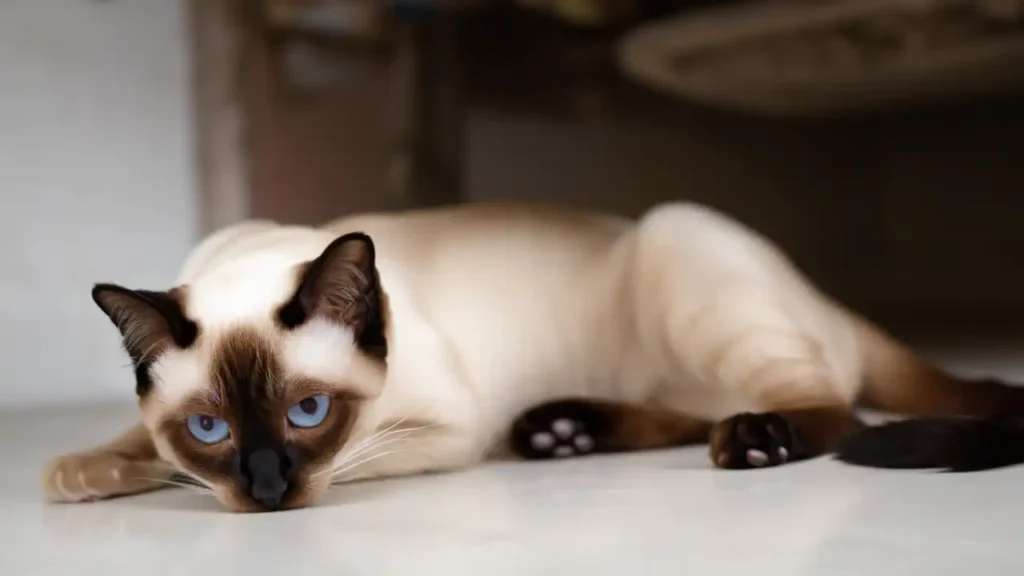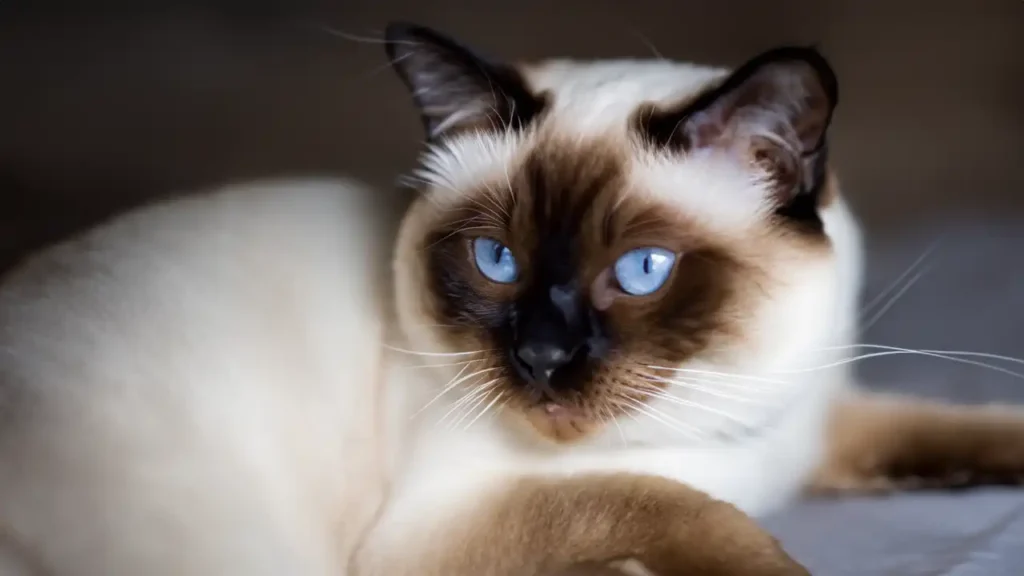Siamese cats hold a special place in the hearts of cat lovers around the world. With their distinctive markings, sapphire blue eyes, and outgoing personalities, it’s no wonder these cats have fascinated people for centuries. So what’s behind the Siamese cat mystique? Let’s peel back the layers and explore what makes these cats so captivating.
Table of Contents
Physical Characteristics of the Siamese Cat

You can spot a Siamese from a mile away thanks to their unique colorpoint coat pattern. This means they have a light-colored body with darker points on the ears, face, legs, and tail. Originally from Thailand (formerly Siam), early Siamese cats were chocolate and seal (dark brown) points. Nowadays, you’ll find Siamese cats in seal, chocolate, blue (gray), lilac (pale gray), red, and cream paint colors.
Other standout physical traits include:
- Triangular-shaped head with large, wide-set ears
- Slim, tubular body shape
- Long, whip-like tail
- Almond-shaped blue eyes
- Wedge-shaped face with a long, straight nose
The blue eyes are a result of an enzyme deficiency that causes reduced pigmentation. And their lean, flexible body allows them to maneuver with cat-like agility and grace. Clearly, everything about their physique screams sleek and athletic.
Siamese kittens are born white because the color points don’t begin to show until they are several weeks old. This interesting coat development is caused by temperature-sensitive albinism. The coolest parts of a Siamese cat’s body (extremities like ears, tail, nose) darken first as they are slightly cooler than the rest of the body. By four months old, a Siamese kitten’s points will be fully defined.
Temperament and Personality of the Siamese Cat

Extroverts of the cat kingdom, siamese wear their hearts on their sleeves. They thrive on human interaction and aren’t shy about voicing their opinions. Siamese cats will chat your ear off with melodic meows and chirps, earning them a reputation as vocal attention-seekers.
These inquisitive cats bubbly personalities also shine through in their playfulness. They love pouncing, chasing, and anything that sparks their curiosity. Snuggle time is also important for these affectionate felines. They’ll cozy up on your lap at every opportunity.
While demanding at times, siamese repay you with unwavering loyalty. They forge strong bonds with their human families. And they tend to pick one special person as their favorite human. You’ll never feel lonely with a devoted Siamese by your side.
Siamese cats have a reputation for being headstrong and demanding. This likely stems from their extreme intelligence and need for stimulation. Without proper outlets for their energy, siamese can resort to destructive or loud behavior like knocking things over or yowling. The key is providing them with interactive playtime, puzzle toys, and activities that engage their active minds. A happy siamese is a well-behaved siamese!
History and Cultural Significance of the Siamese Cat
With their royal roots, siamese cats have long been associated with prosperity and prestige. They originated in Siam (now Thailand), where they held exalted positions as temple cats and prized possessions of nobility. According to legend, siamese cats were the guardians of ancient manuscripts at the temple of Lao-Tsun. Their duty was to protect the texts from being destroyed by rats and other rodents.
In the late 19th century, siamese cats first arrived on Western shores as exotic gifts for royal families of Europe. Their mystique and allure quickly captured the public’s imagination. President Rutherford B. Hayes and his wife Lucy were among the first Americans to welcome one into their home in the 1870s.
Today, siamese remains one of the most iconic and recognized breeds. They paved the way for the cat fancy and show the culture that thrives today. And their striking looks still turn heads wherever they go.
The first Siamese cat to become a show champion was Champion Wong Mau in 1895 in the UK. In the early 1900s, breeders began to selectively breed Siamese cats with more extreme features like very elongated heads and skinny bodies. This spawned the development of new Siamese breeds like the extreme-faced Oriental Shorthair.
Modern Siamese cats have a more moderate look than their early 20th-century counterparts, but their captivating blue eyes and melodic voices endure. Siamese remain perennial favorites for cat shows, advertisements, movies, and more.
Conclusion
Behind their standoffish reputation lies a playful, people-oriented cat eager for a special bond. Siamese cats are complex creatures of habit, with quirks that make them wonderfully unique. Their attention-seeking nature simply reflects a deep need for companionship. Shower them with affection and mental stimulation, and they’ll return the favor tenfold. So don’t be fooled by the sphinx-like gaze of these blue-eyed beauties. Their enigmatic allure comes from a heart overflowing with love and loyalty.
For those willing to welcome their chatter and hijinks, siamese cats make lively, devoted companions like no other. Their synchronicity with humans is unparalleled in the feline world. So if you crave a friend who hangs on your every word and enjoys lively conversation, the Siamese is sure to speak your love language.
FAQ
Q: How long do Siamese cats live?
A: With proper care, Siamese cats typically live 12-15 years on average, with some reaching 20 years or more.
Q: Do Siamese cats like to be held?
A: Yes! They tend to be very affectionate and social. They enjoy being held and will often seek out human interaction.
Q: Are Siamese cats good with other pets?
A: Siamese do well with dog and cat friends, especially if raised together from kittenhood. Proper introductions are key to success.
Q: Why do Siamese cats follow their owners?
A: The Siamese breed bonds very closely with their families. Their tendency to follow their owners from room to room is a sign of devotion.
Q: Are Siamese cats good for first-time owners?
A: They are highly intelligent but also demanding. They thrive with attentive owners who can provide training, playtime, and companionship.
Q: Do Siamese cats need a companion?
A: They are quite social so having a feline or canine companion can be beneficial, but human interaction is their top priority.
Q: How smart are Siamese cats?
A: They are known as one of the most intelligent cat breeds. They excel at learning tricks, solving puzzles, and communicating with their owners.


